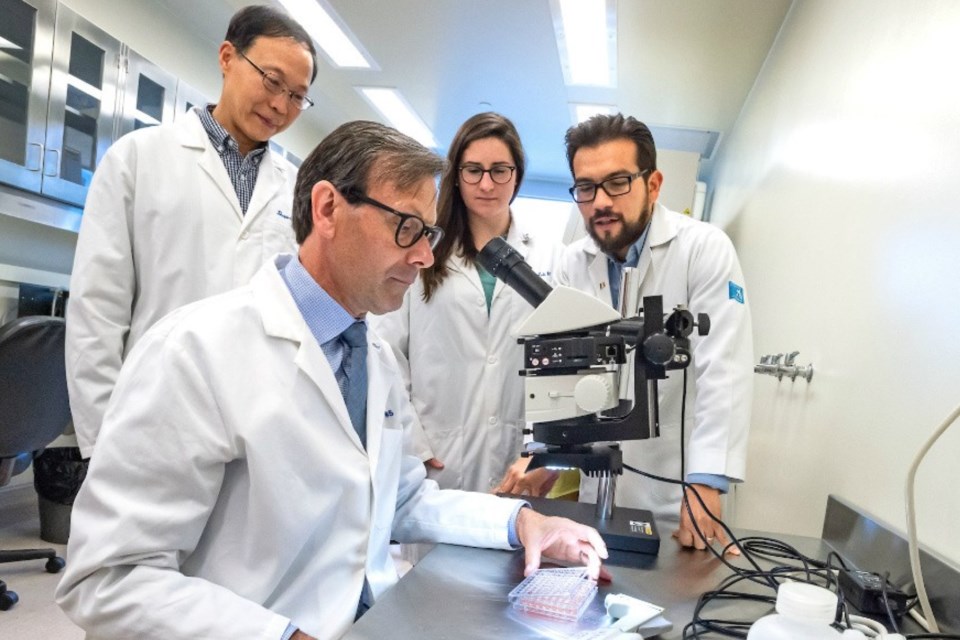The 100th anniversary of the first successful injection of insulin is coming up in two years and it’s been 20 years since Dr. James Shapiro and his team announced the Edmonton Protocol method of implanting a donor’s pancreatic islet cells to treat certain diabetics. It has had a fair share of its successes along with some lingering limitations.
Now, a team of people is hoping to rally the country together to fund the effort to find a successful solution for all diabetics.
HEADing to 2022 wants to help eliminate all diabetes, hence the acronym for its name. The grassroots effort is partnered with the Diabetes Research Institute Foundation Canada (DRIFCan), along with the Canadian Progress Club, the St. Albert Breakfast Lions and the Alberta Retired Teachers’ Association.
“We put together a committee of people that are going to look into what could we do about finding a cure for diabetes. We were talking about what can we do to help the scientists who are doing the research find a cure, and the one thing that the researchers are saying is they're getting very close. Their biggest problem is coming up with money,” explained committee member and St. Albert lawyer Doug Ritzen.
The idea is simple: get 1 million people to make a modest donation of $22 each, and raise $22 million within the next two years. Doing so would enable Canadian researchers to take the cure from their labs to diabetics all around the world. It involves stem cells developed from the diabetics themselves, so there would be no risk of rejection, as other islet cell transplants have been plagued with. It’s a process that was originally developed in Japan by Professor Shinya Yamanaka who received the Nobel Prize for the work.
The cure would not only improve people’s lives but it would also be a saving grace to world economies in some respects. The estimated cost to Canada’s health care system went from $6.3 billion in 2000 – the year the Edmonton Protocol was announced – to $12.2 billion in 2010, to a projected $27 billion this year.
Mark Bosworth is also on the committee, though he’s had more firsthand experience with the disease than some of the others. His son Spencer was diagnosed with Type 1 Diabetes when he was only two.
“He was skinny as a rail and peeing all the time. I remember getting a phone call at work for my wife, saying, ‘Mark, I think Spencer has diabetes,’” he recalled.
They each had family members with diabetes so it wasn’t a totally foreign subject, but being the parent of a diabetic toddler made for a big lifestyle challenge.
“I go from needles – I was never afraid but I’d cringe – to ‘I have to give my two-year-old injections every day to test him.’ The G forces on the learning curve are pretty amazing.”
Bosworth says his son’s disease has been very manageable. Spencer, now 28, has two degrees and works as a schoolteacher. He has a lot going for him. Most diabetics he knows, the proud dad continued, don't want people to feel sorry for them. They don't really want the world to know about it and they certainly don’t want it to define them.
“They all want a cure ... make no mistake. It's not a great thing; it's not a great disease, but it at least is manageable. Many diabetics can live a healthy life, but for every healthy diabetic, there's probably five that it's a gong show. They're blind, amputees, kidney disease, blindness, neuropathy…”
Shapiro and his DRIFCan team are far into their research and their results are very promising. What’s more, they’re doing it with an eye for getting the most out of their funding.
“They're doing it on a shoestring budget. It's so embarrassing. I just heard, ‘We're going to get $300 million to help countries with COVID.’ Wait, wait – can we have $22 million of that, please? We’ll cure the other greatest pandemic in the world: diabetes. I'm pretty passionate about this campaign.”
For his part, Dr. Shapiro keeps optimistic but realistic.
“This funding is the key that will unlock our ability to move forward with a potential cure for diabetes,” he said, mentioning other international teams that he has been working with.
“We've been able to transplant cells that we've made from the blood samples of patients with diabetes, turn them back in time, like they were in an embryo, and then turn them forward in time like alchemy into being islet cells that make insulin. We've been able to reverse and effectively cure diabetes in some mice with cells derived from patients. The beauty of this kind of treatment is that it uses the patient's own cells, so the body won't reject them. We really believe that this is a possible future game changer for diabetes.”
There’s a lot of hope for the plan.
“I think at the end of the day, this will be a game-set-match if we can make this work. I have a much broader view of this than just treating say the first 12 patients, which would be a major milestone for us. We can't do that without major funding, and that's where HEADing to 2022 comes in. Beyond that, we're also working with some brilliant international teams of experts in artificial intelligence and robotics trying to work out how we might be able to take this technology to be a cure for everybody and universally available at a very appropriate price point.”
Details on the project and a link to donate can be found at headingto2022.com.




